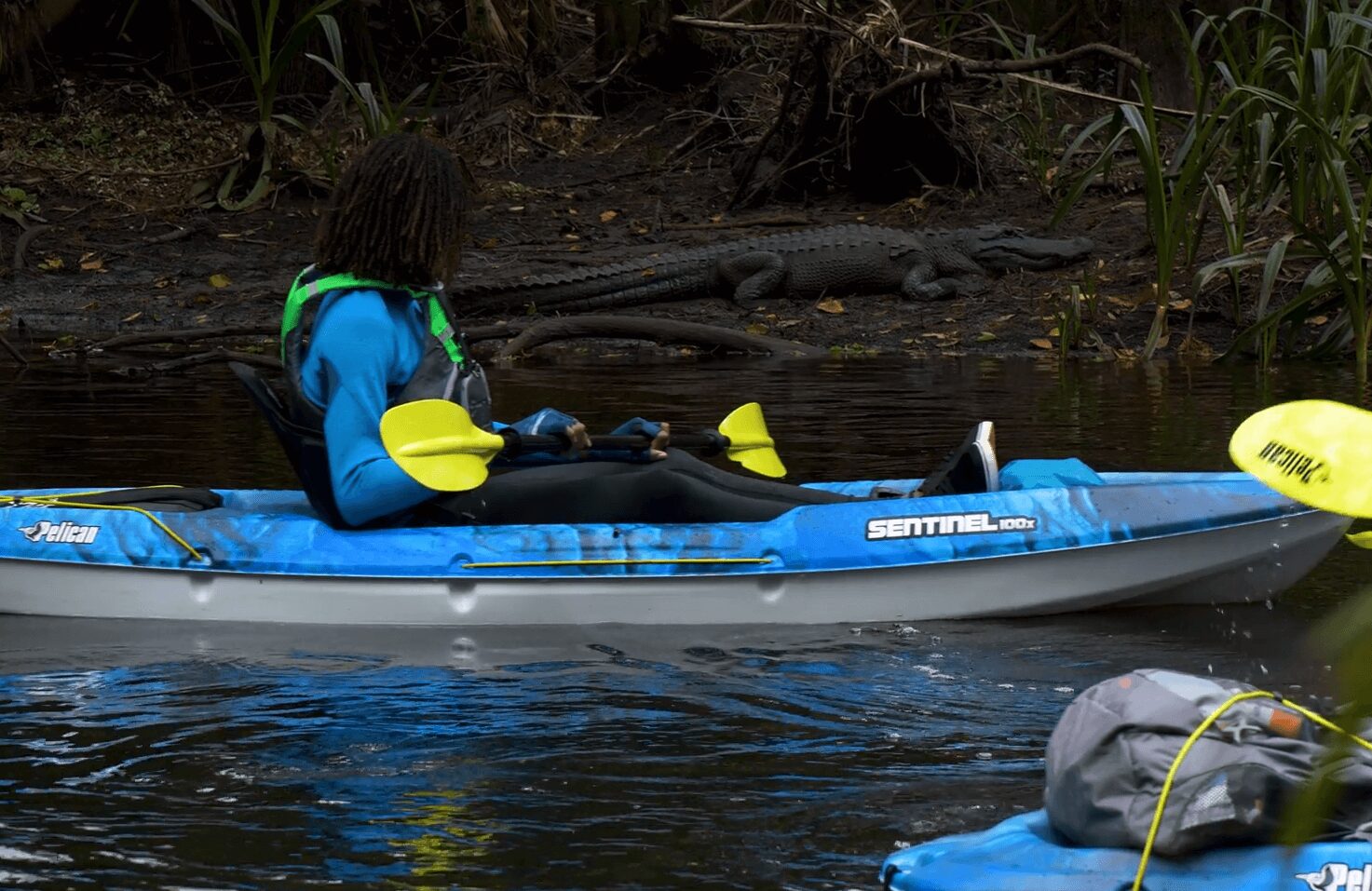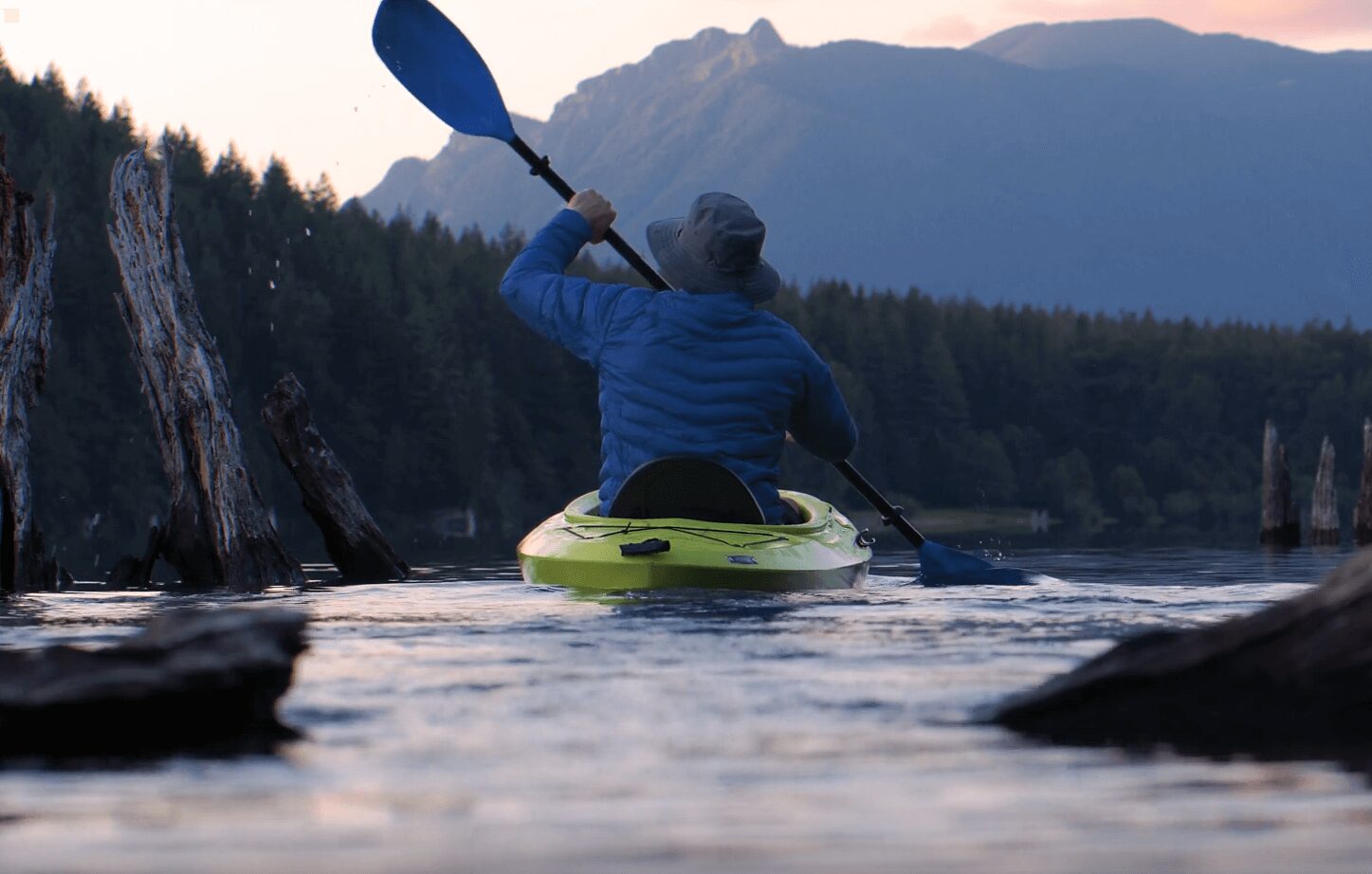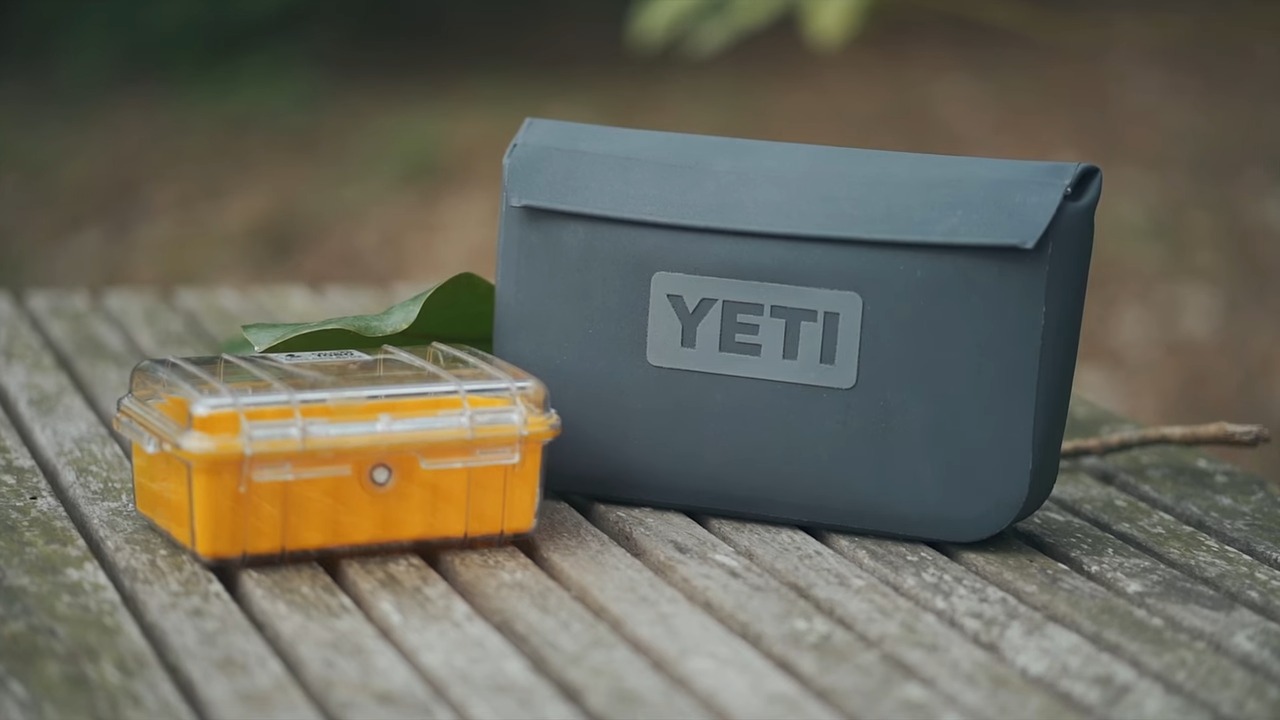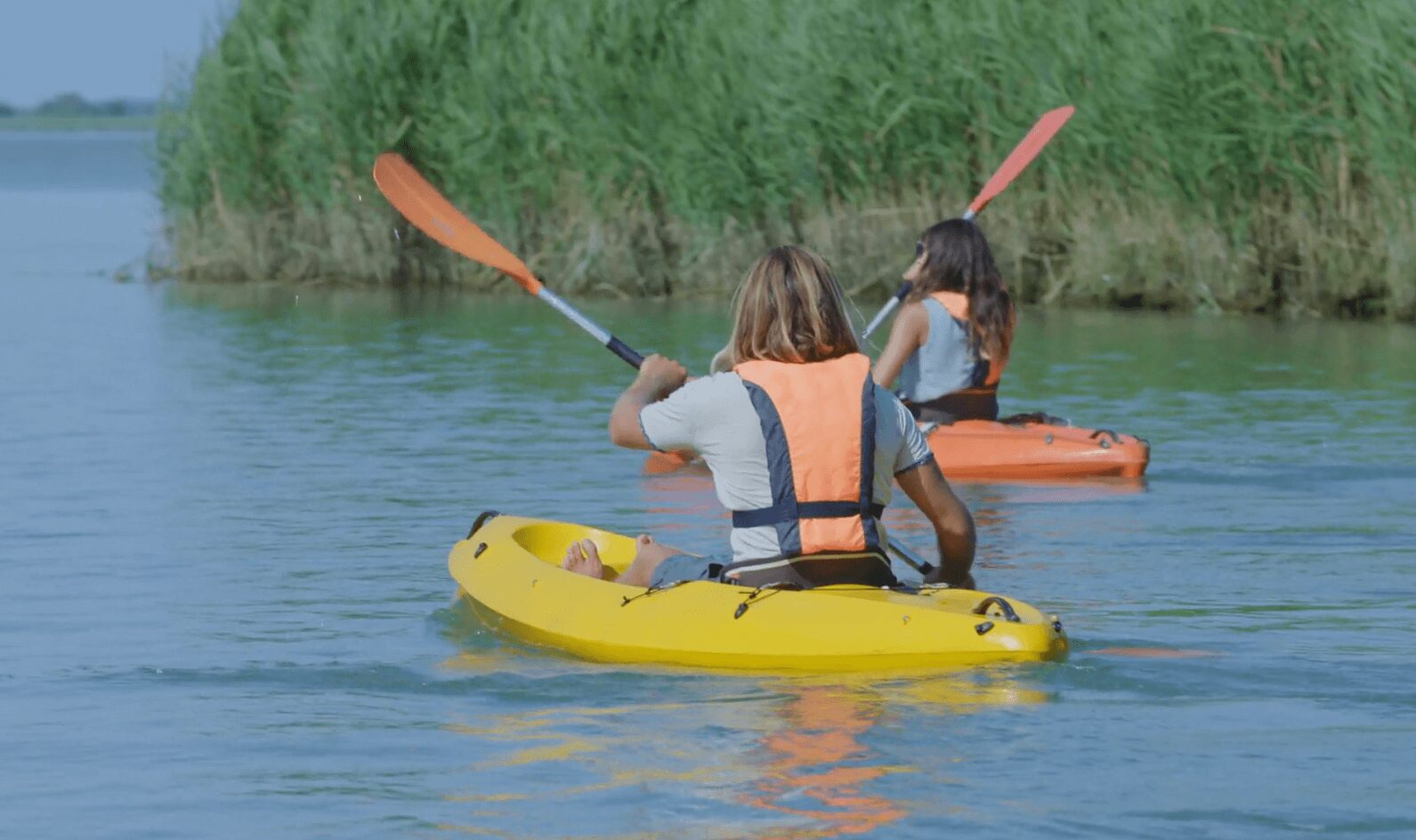Ready for a kayaking adventure? Let’s get you geared up properly. Trust me, what you wear can make or break your experience on the water. From keeping safe to staying comfy, let’s cover everything you need to know about dressing for a day of kayaking.
Safety First – Personal Flotation Device (PFD)
Rule number one: always wear a personal flotation device (PFD). This isn’t up for debate. A PFD is your best friend out there, providing that extra floatability in case you take an unplanned dip. Look for ones specifically designed for kayaking to ensure they don’t restrict your paddling movements.

Types of PFDs for Kayaking
PFDs are classified into different types based on their intended use and performance in water:
Type I: Offshore Life Jackets
- Designed for open, rough, or remote waters where rescue may take time.
- Provides the most buoyancy (22 lbs for adults).
- Can turn most unconscious wearers face-up in the water.
Type II: Near-Shore Buoyant Vests
- Intended for calm, inland waters or where quick rescue is likely.
- Less buoyant than Type I (15.5 lbs for adults).
- Can turn some unconscious wearers face-up.
Type III: Flotation Aids
- Suitable for calm, inland waters or where quick rescue is expected.
- Often used for kayaking, canoeing, and other water sports.
- Offers 15.5 lbs of buoyancy for adults but generally does not turn unconscious wearers face-up.
- More comfortable and versatile, allowing greater freedom of movement.
Type IV: Throwable Devices
- Not wearable but meant to be thrown to someone in distress.
- Includes devices like cushions and ring buoys.
Type V: Special-Use Devices
- Designed for specific activities such as kayaking, windsurfing, or waterskiing.
- Must be worn according to the label to be effective.
- Some include features like integrated harnesses or extra buoyancy for particular uses.
Dress for the Water, Not the Air
Here’s a pro tip: dress for the water temperature, not the air temperature. Water can be deceptively cold, and if you end up in it, you’ll be thankful you took the extra precaution.

Layering Basics
Layering is key to having the best kayaking experience possible. Here’s how to do it right:
- Base Layer: Start with a moisture-wicking base layer. Materials like polyester or nylon are perfect. Avoid cotton like the plague – it holds water and will make you colder.
- Mid Layer: Add an insulating mid-layer, like a fleece jacket. This traps heat and keeps you warm.
- Outer Layer: Finish with a waterproof and windproof outer layer. A good paddling jacket will protect you from the elements and keep you dry. Make sure that the layer is actually waterproof, not just water-resistant.
Warm Weather Gear
When kayaking in summer or warmer conditions, go for light, breathable, and quick-drying fabrics.
- Rash Guards: These are your best option on sunny days. They provide sun protection and dry quickly.
- Quick-Dry Shorts or Swimwear: Comfort and practicality are the names of the game here. Very, very important.
- Water Shoes: You’ll need shoes that can get wet and dry quickly while providing a good grip. Neoprene booties or water sandals work well.
Cold Weather Gear
Cold weather kayaking demands more attention to detail. Hypothermia is a real risk, so gear up properly.
- Wetsuits and Drysuits: For seriously cold conditions, a wetsuit or dry suit is essential. Wetsuits provide insulation by trapping a thin layer of water next to your body, which warms up from your body heat. Drysuits, on the other hand, keep you completely dry and are perfect for extremely cold water.
- Layering: Stick to the base, mid, and outer layer strategy. Add a beanie and gloves if it’s really cold.
- Neoprene Booties: Keep your feet warm and protected.
What Shoes to Wear When Kayaking
Good footwear is crucial. You’ll need something that can handle getting wet while protecting your feet from rocks and other hazards.
- Neoprene Booties: These are great for both warmth and protection.
- Water Shoes or Sandals: Ideal for warm weather, providing grip and comfort.
Head and Hands Protection
Don’t forget about your head and hands.
- Hats: A hat with a brim can shield you from the sun. In colder weather, a neoprene beanie works wonders.
- Gloves: Paddling gloves can improve your grip and protect your hands from blisters and cold.
Keep Your Valuables Safe

Ever lost a pair of sunglasses to the river? Avoid that by using glasses retainers. Also, consider waterproof cases for your phone and other valuables.
Dressing for Different Conditions
Let’s break it down by season.
- Spring: The water is still cold, so layer up. A wetsuit or drysuit might be necessary, depending on the temperature.
- Summer: Light, quick-dry clothing is perfect. Don’t skimp on sun protection.
- Fall: Similar to spring, but prepare for cooler temperatures and potential rain. Layering is key.
- Winter: Only for the brave and well-prepared. Drysuits are a must, along with full insulation layers and protective accessories.
Product Recommendations
Here are some gear recommendations to get you started:
Lifejackets
- Astral E-Ronny Life Jacket – Best Overall
- Mustang Survival Livery Life Jacket – Best Budget
- NRS Vapor Life Jacket – Best for Kayaking
- Onyx MoveVent Dynamic Life Jacket
- Stohlquist Waterware Edge
Paddling Jackets
- Level Six Bonavista
- Kokatat Tropos Light Drift Jacket
- Extrasport Splash Top – Short Sleeve
Wetsuits
- O’Neill Hyperfreak Wetsuit
- Buell RB2 Wetsuit
- Billabong Furnace Comp Wetsuit
- NRS Wetsuits
- Vaikobi Wetsuits
Drysuits
- Level Six Emperor – Best Overall
- Gul Juniper – Most Comfortable
- Typhoon Multisport 5 – Best for Mobility
- NRS Extreme – Best for Durability
- Gill Dinghy – Best for Adjustability
Waterproof Cases
- OtterBox Frē Series Waterproof Case – Best Overall
- Case-mate Waterproof Phone Pouch – Best Pouch
- CaliCase Universal Waterproof Floating Case – Best for Kayaking
- Plano Guide Series 3600 Field Box Waterproof Case
- SealLine E-Case
Final Thoughts
Kayaking is a blast, but it’s also about being prepared. Dressing appropriately ensures you stay comfortable and safe no matter what the conditions are. From layering up in the cold to choosing the right quick-dry gear for summer, it’s all about planning ahead.
Remember, the right gear makes all the difference. It doesn’t matter if you’re hitting calm lakes or tackling whitewater rapids, dressing smart keeps the focus on fun and adventure. So, gear up, get out there, and enjoy the paddle!

